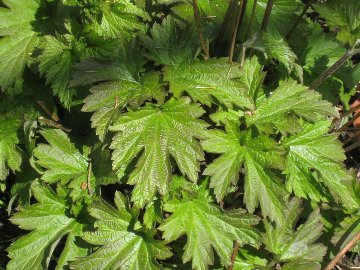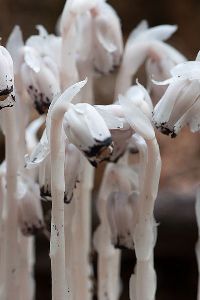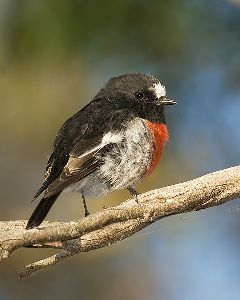What You Never Knew About Jack
With a common name like jack-in-the-pulpit, it's clear that Arisaema triphyllum has a variety of unique attributes. The plant was the inspiration for the poem below. Take note of the large variety of organisms that are mentioned in the poem. Special thanks to my friend Hannah Gibson for the image of the anemone. To learn more interesting facts about jack-in-the-pulpits, scroll to the bottom of the page.
Jack
In The Pulpit
By Clara Smith
Jack in the pulpit
Preaches to-day,
Under the green trees
Just over the way.
Squirrel and song-sparrow,
High on their perch,
Hear the sweet lily-bells
Ringing to church.
Come, hear what his reverence
Rises to say,
In his low painted pulpit
This calm Sabbath-day.
Fair is the canopy
Over him seen,
Penciled by Nature’s hand,
Black, brown, and green.
Green is his surplice,
Green are his bands;
In his queer little pulpit
The little priest stands.

In black and gold velvet,
So gorgeous to see,
Comes with his bass voice
The chorister bee.
Green fingers playing
Unseen on wind-lyres,
Low singing bird voices,—
These are his choirs.
The violets are deacons—
I know by the sign
That the cups which they carry
Are purple with wine.
And the columbines bravely
As sentinels stand
On the look-out with all their
Red trumpets in hand.

Meek-faced anemones,
Drooping and sad;
Great yellow violets,
Smiling out glad;
Buttercups’ faces,
Beaming and bright;
Clovers, with bonnets,—
Some red and some white;
Daisies, their white fingers
Half-clasped in prayer;
Dandelions, proud of
The gold of their hair;
Innocents,—children
Guileless and frail,
Meek little faces
Upturned and pale;
Wild-wood geraniums,
All in their best,
Languidly leaning
In purple gauze dressed:—
All are assembled
This sweet Sabbath-day
To hear what the priest
In his pulpit will say.

Look! white Indian pipes
On the green mosses lie!
Who has been smoking
Profanely so nigh?
Rebuked by the preacher
The mischief is stopped,
But the sinners, in haste,
Have their little pipes dropped.
Let the wind, with the fragrance
Of fern and black birch,
Blow the smell of the smoking
Clean out of the church!
So much for the preacher:
The sermon comes next,—
Shall we tell how he preached it,
And where was his text?
Alas! like too many
Grown-up folks who play
At worship in churches
Man-builded to-day,—
We heard not the preacher
Expound or discuss;
But we looked at the people,
And they looked at us.
We saw all their dresses,
Their colors and shapes;
The trim of their bonnets,
The cut of their capes.
We heard the wind-organ,
The bee, and the bird,
But of Jack in the pulpit
We heard not a word!
In 1930, Georgia O'Keefe painted a series of pictures based on the jack-in-the-pulpit. The earlier pictures in the series can be easily identified, but they become progressively more abstract.
When properly prepared, the corm, or underground stem, of the jack-in-the-pulpit is said to have a chocolate-like flavor.
Many of the jack-in-the-pulpit's near relatives in the genus Arisaema are known as cobra lilies for their apparent "snake-like" appearance.
As mentioned on the classification page, the name jack-in-the-pulpit refers to the appearance of the spadix and the spathe of the the plant, which correspond to Jack and his pulpit.

